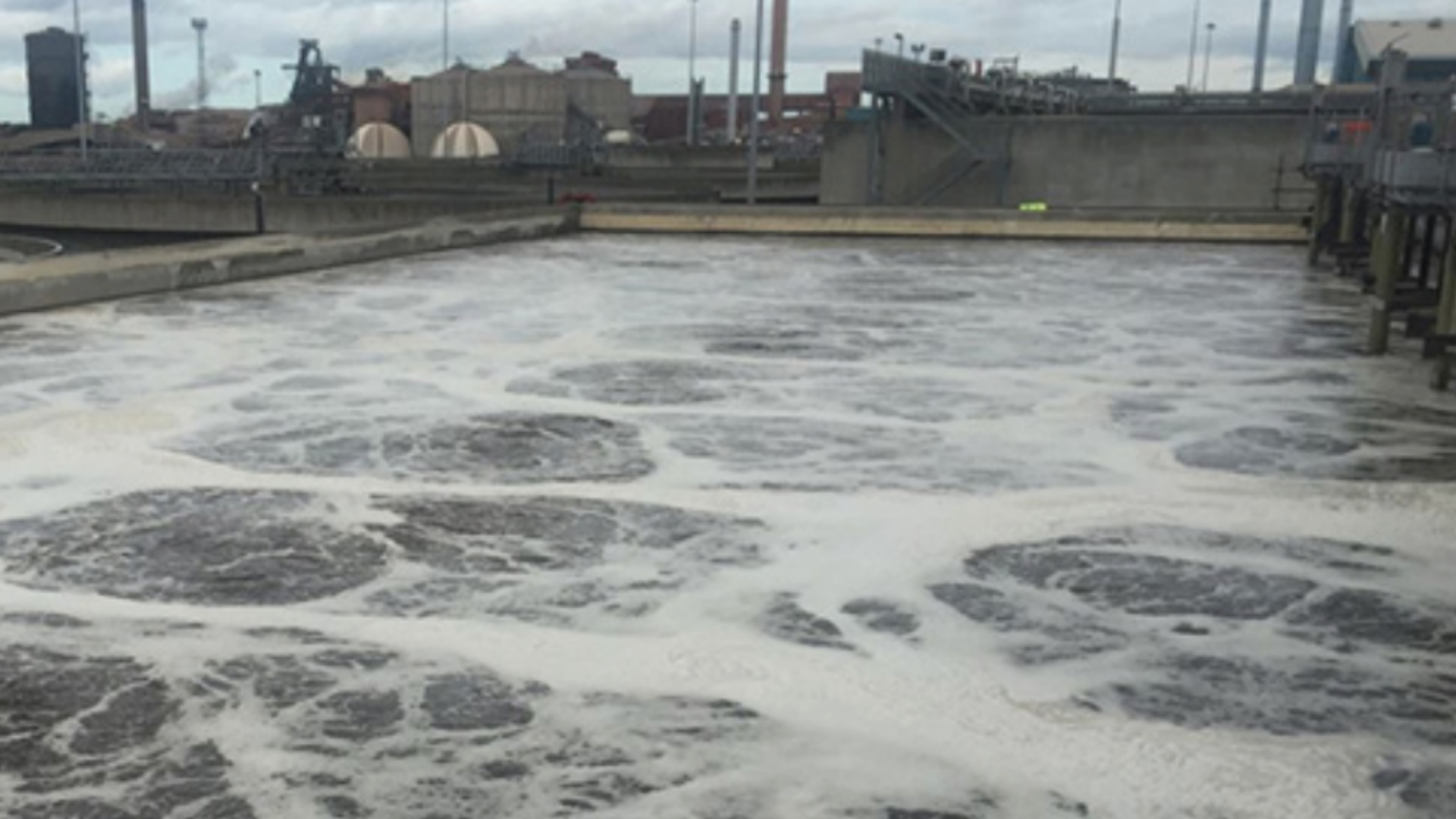3 Tips to Prevent Sludge Bulking in Your Wastewater Treatment System

Sludge bulking is a common problem in wastewater treatment systems, particularly those operated by food and beverage manufacturers. Consider the high levels of organic compounds and varying nutrient loads found in the influent from, say, a meat processing plant.
This common scenario is a problem because sludge bulking will hamper the sedimentation process, leading to operational inefficiencies down the line.
Your team can prevent this problem, however, and you must. Getting out in front of any sludge bulking tendencies will improve the efficiency of the treatment process.
The Causes of Sludge Bulking
The primary cause of sludge bulking is a matter of microbial imbalance. The rampant overgrowth of filamentous bacteria in the activated sludge is one variable you need to control.
Within the microbial communities in your wastewater treatment ecosystem, filamentous bacteria play an important role: They help stabilize the floc structure of other bacteria by providing a literal support system that holds floc particles together. This role improves the efficiency of solid-liquid separation in the settling area of the tank.
But overgrowth of this type of bacteria is not good.
Unlike floc-forming bacteria that clump together to form compact masses, filamentous bacteria produce long, thread-like structures. These structures may entangle with one another and trap air and water, preventing the sludge from settling properly and causing it to float cloud-like through the wastewater tank.
Thus: sludge bulking.
So, what spurs filamentous bacteria growth?
When your biochemical oxygen demand (BOD) is very high relative to nutrient content (like nitrogen and phosphorus), you’ve got a problem. This ratio imbalance will stress the microbial community and promote the growth of filamentous bacteria over floc-forming bacteria.
This imbalance leads directly to the bulking phenomenon in the activated sludge.
Another cause of sludge bulking comes from insufficient aeration or low dissolved oxygen levels. Filamentous bacteria are more capable of surviving in lower oxygen environments compared to their floc-forming counterparts. Filamentous bacteria thrive in those conditions.
Factors such as temperature fluctuations, hydraulic loading changes, and the presence of certain chemicals can also influence the growth of filamentous bacteria and contribute to sludge bulking.
Preventive Strategies for Sludge Bulking
Optimizing Aeration Rates
Aeration is vital in promoting the growth of aerobic bacteria , which are essential for the degradation of organic matter into compact, settleable flocs. Proper aeration facilitates the oxidation of organic substances and supports aerobic digestion processes.
Adjusting aeration rates is critical because both excessive and insufficient aeration can promote the growth of filamentous bacteria . Aeration rates are a very important parameter to understand.
By maintaining an optimal oxygen level in the bioreactor, the growth conditions for floc-forming bacteria are optimized, cutting back on filamentous overgrowth.
Automated systems that adjust aeration based on real-time measurements of dissolved oxygen (DO) and organic load can dynamically balance the oxygen supply, ensuring it meets the biological demand without overshooting, which could strip essential nutrients or unduly agitate the biomass.
“Bulking sludge is normally indicative of the health of the process microbiology and sludge quality, specifically its filterability,” says Dennis Livingston, president of MMBR Systems . “If it becomes an issue then we would recommend long-term fixes like increasing the DO concentration, adding nutrients and reducing the SRT. A short-term fix is polymer dosing, as well as chemical cleaning if membrane fouling propensity has been affected (which is normally the case).”
Aeration is a delicate game of balance, both art and science, and it’s key to your wastewater treatment efficiency.
Controlling Nutrient Ratios
Nutrients are another matter of proper balance.
Think carbon, nitrogen, and phosphorus: The harmony of your nutrient content is essential for the health of your microbial ecosystem. An excess of nutrients can lead to the proliferation of filamentous bacteria, while a deficiency might starve the beneficial bacteria, disrupting the treatment process.
Are you sensing a theme here?
Regular monitoring and adjustment of these ratios ensure that the microbial life within the reactor has the optimal conditions for growth and function.
By managing the input of external carbon sources or adjusting the feed rates of nitrogen and phosphorus, operators can suppress the conditions that favor the growth of filamentous bacteria. This proactive nutrient management helps maintain a microbial community that is conducive to forming dense, easily settleable flocs.
Regular Sludge Wasting
Sludge wasting is a critical process for managing microbial populations in wastewater treatment systems. It ensures a balanced ecosystem within the activated sludge system, helping prevent operational problems such as activated sludge bulking and filamentous bulking sludge issues.
Here, we’re referring to the deliberate removal of a portion of the biomass from the wastewater treatment plant to control the amount and quality of the microbial population within the system.
Let’s take a step back with a metaphor: Regular sludge wasting in wastewater treatment can be likened to pruning a garden.
Just as pruning helps remove overgrown or dead branches to promote healthier growth and prevent the spread of disease among plants, regular sludge wasting helps control the biomass within a wastewater treatment plant. By removing excess sludge, the process ensures that the microbial population remains vibrant and effective, preventing the overgrowth of activated sludge bulking bacteria that can lead to solids separation problems such as bulking sludge or viscous bulking.
Your team must control the age and viability of the microbial biomass. Older sludge tends to have reduced metabolic activity and can encourage the development of filamentous bacteria, leading to sludge bulking. By controlling the sludge age through strategic wasting, the treatment plant maintains a more active, younger population of floc-forming bacteria.
Setting an optimal solids retention time (SRT) that keeps the microbial community vibrant and effective is crucial.
Optimal SRT varies based on influent characteristics, treatment goals, and temperature, typically ranging from 5 to 30 days depending on the specific process needs. Regular adjustments and monitoring of SRT based on performance indicators like BOD levels, dissolved oxygen, ammonia reduction, and sludge volume index (SVI) are vital for effective bulking control and ensuring compliance with effluent standards.
Regular sludge wasting enhances the breakdown of organic pollutants and ensures that the physical characteristics of the sludge promote settling rather than sludge blanket formation. Frequent adjustments to the wasting schedule based on metrics such as sludge concentration, sludge settleability, and suspended solids levels help maintain this balance.
Addressing Existing Sludge Bulking
What about an existing sludge bulking problem?
Prevention is essential, but sometimes corrective actions are necessary to address excessive growth of filamentous bacteria in the system.
Chlorination of Return Activated Sludge
When activated sludge bulking occurs despite preventive measures, chlorination can be an effective remedial technique.
This method selectively targets filamentous bacteria without substantially harming the beneficial floc-forming bacteria.
The controlled application of chlorine helps reduce the population of filamentous bacteria, which are more exposed on the activated sludge floc surfaces and more susceptible to oxidative damage. Like everything else discussed in this article, balance is key. Careful monitoring of chlorine levels ensures that the dosing is effective without being detrimental to the overall health of the microbial community.
Chlorination is a short-term solution, however, one used to mitigate sludge bulking and restore normal operations on the fly. It buys the operator time to reassess and adjust any ongoing preventive strategies.
Through these targeted strategies, wastewater treatment plants can effectively manage and prevent bulking sludge, maintaining system efficiency, compliance with discharge standards, and long-term operational sustainability. Most modern industries must navigate variable loads in their wastewater treatment, so a wastewater treatment strategy designed around prevention is a sustainable long-term approach.
Sign up for the
Integrated Water Services newsletter.
We share important perspectives and news on MBR wastewater treatment every two weeks.


